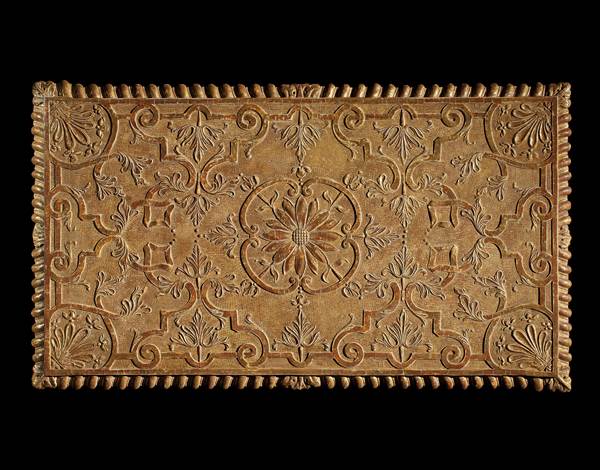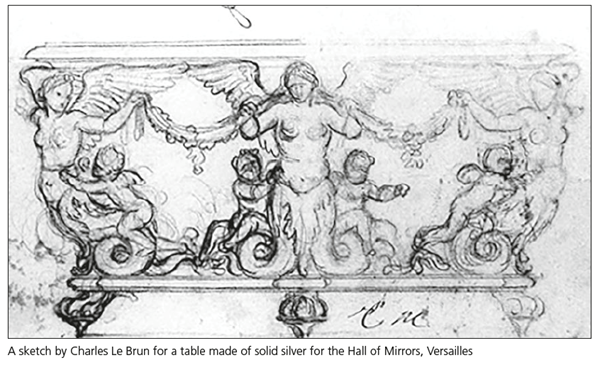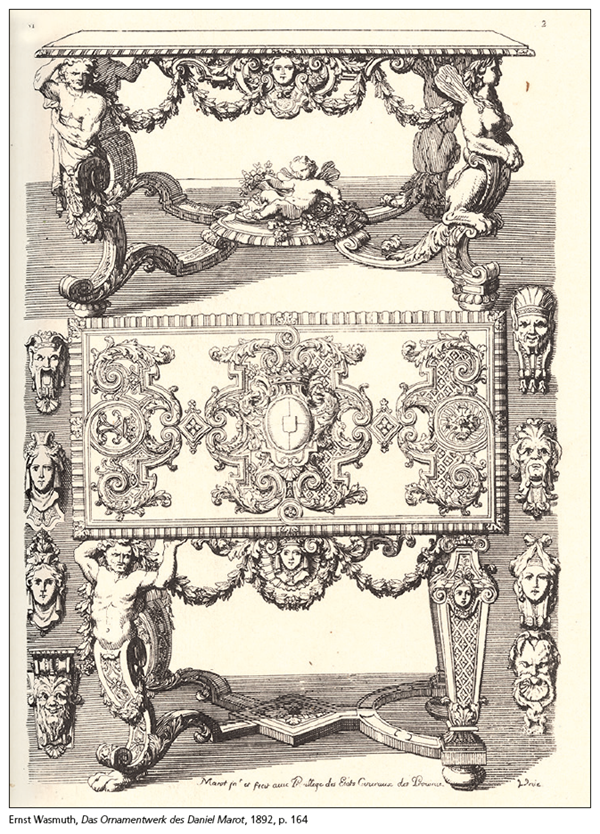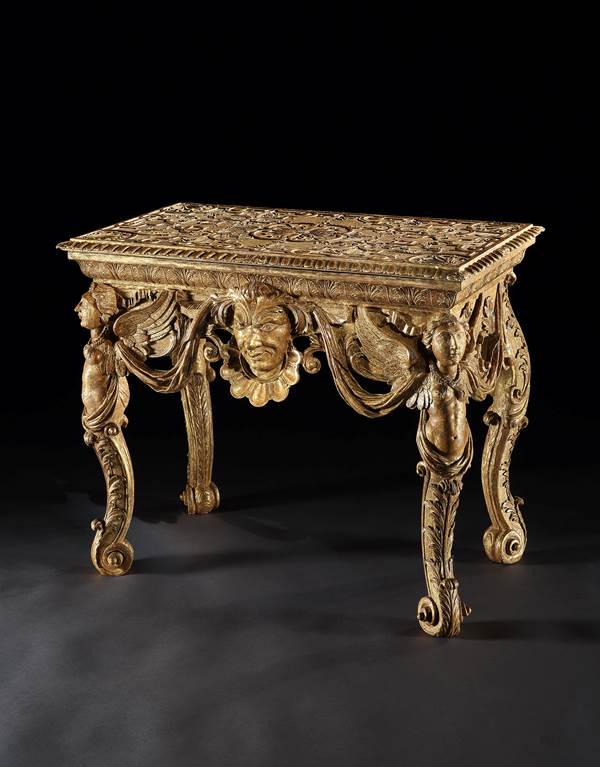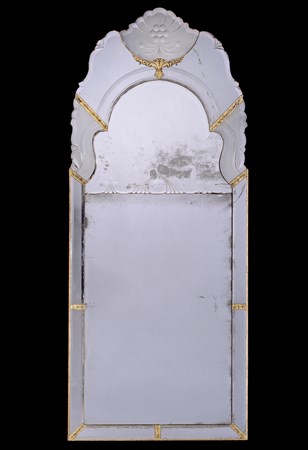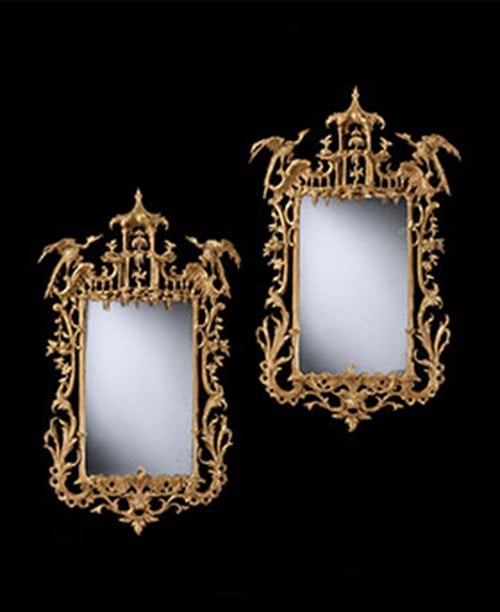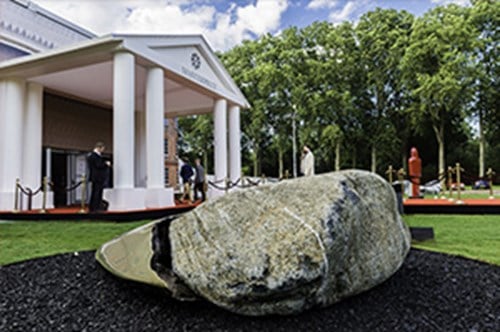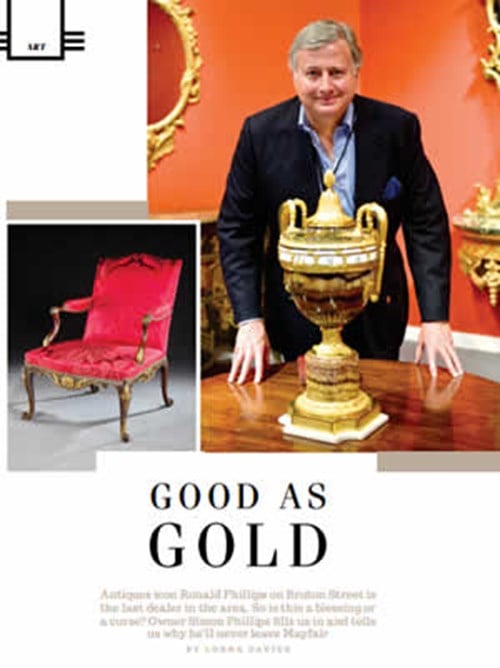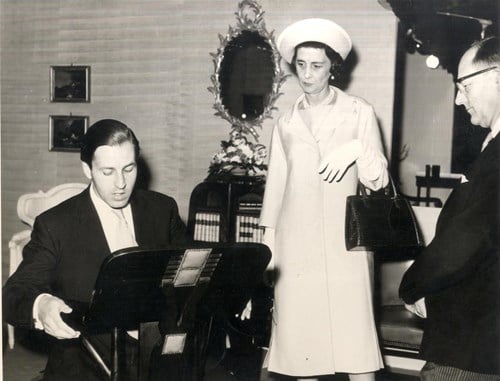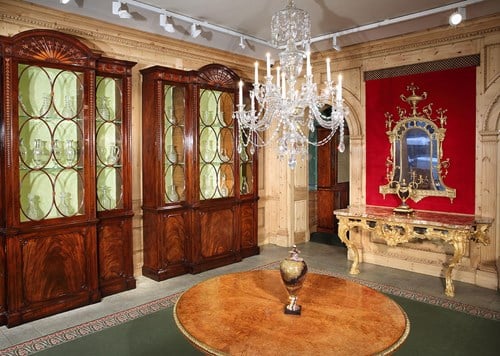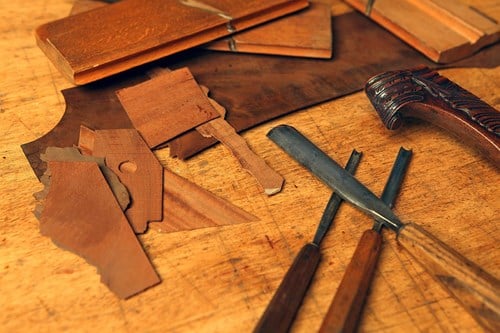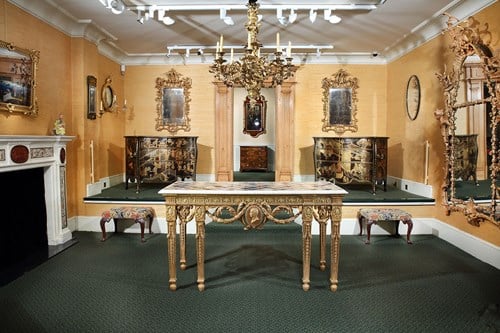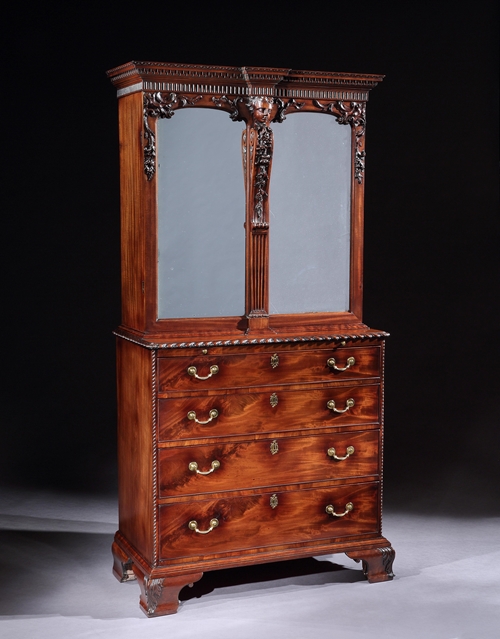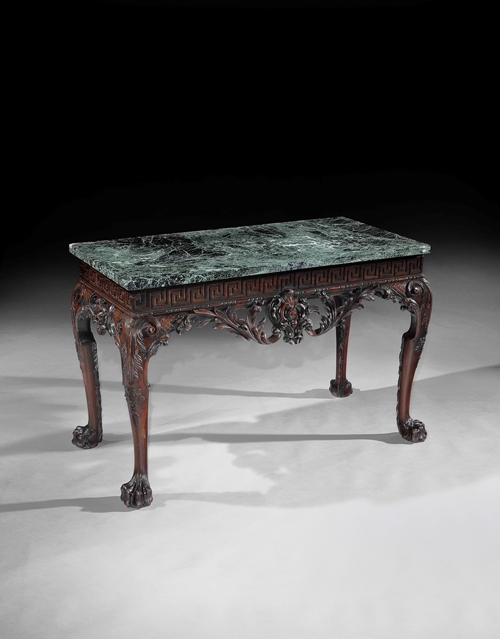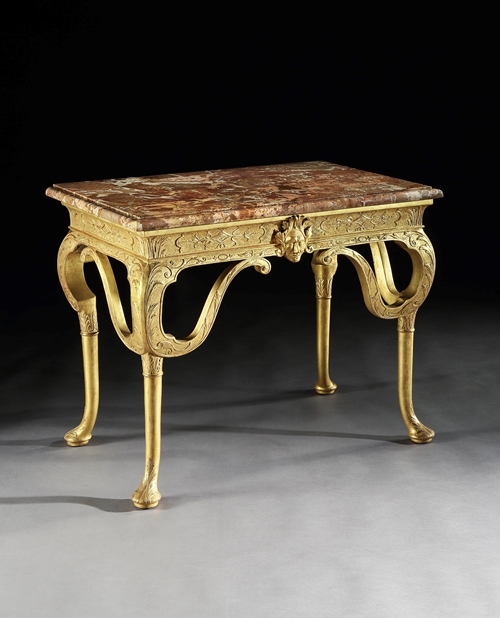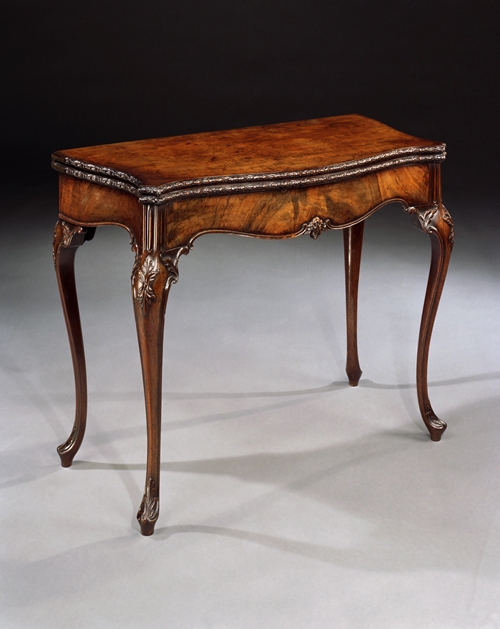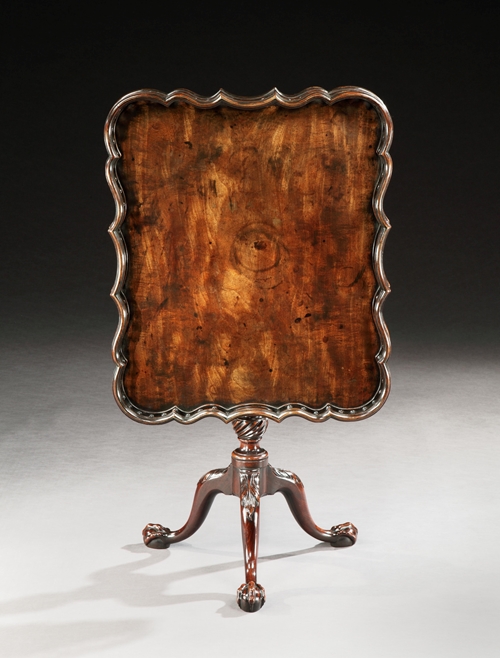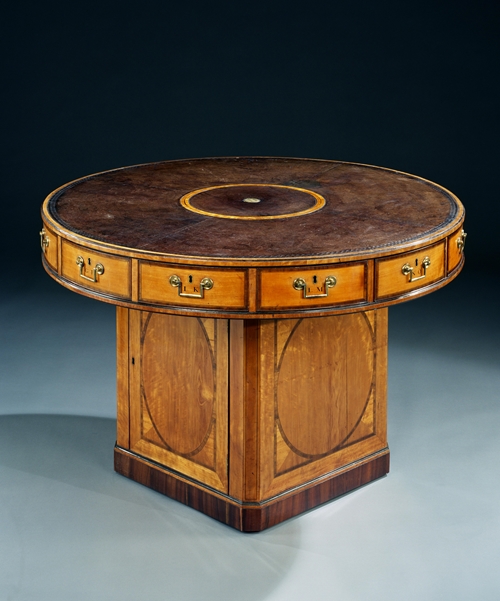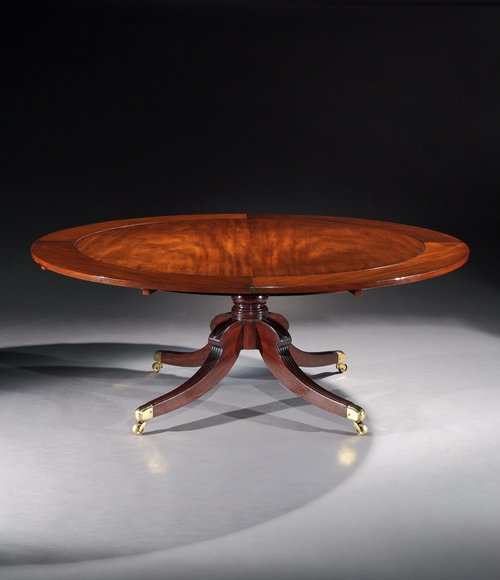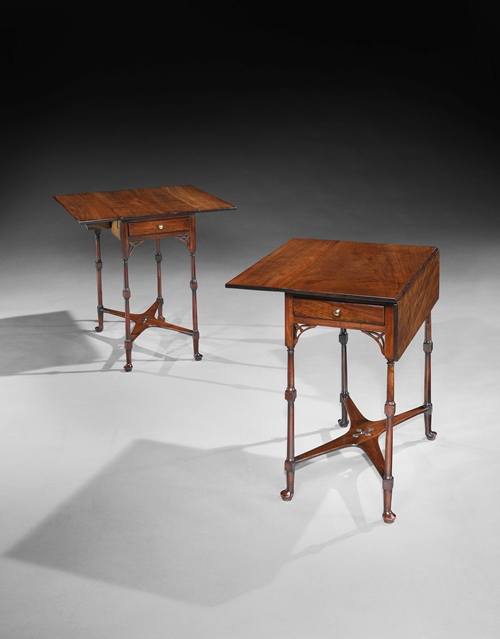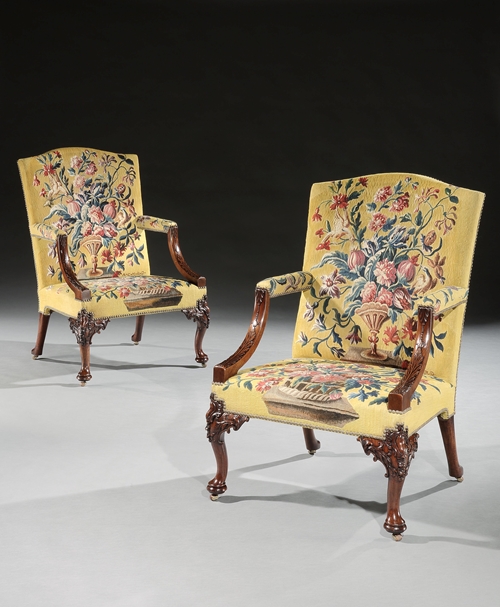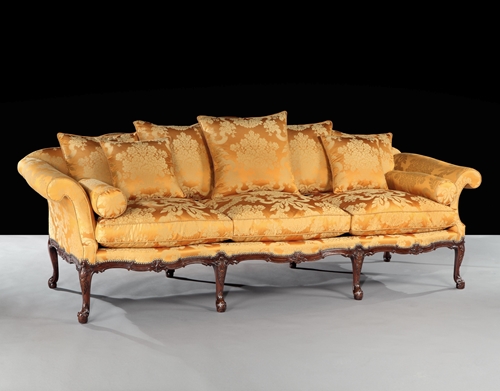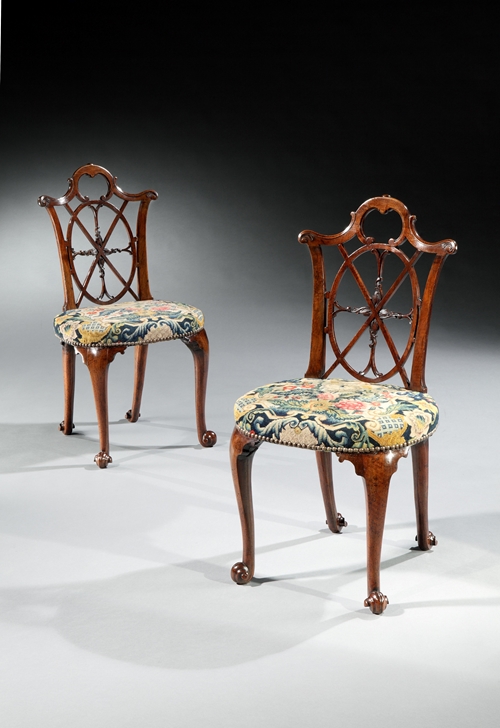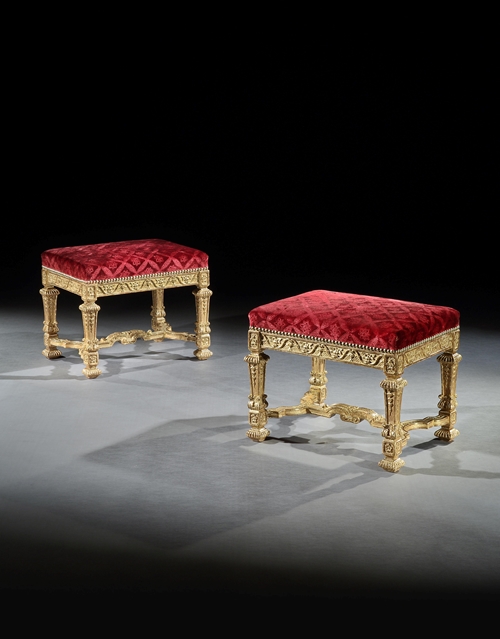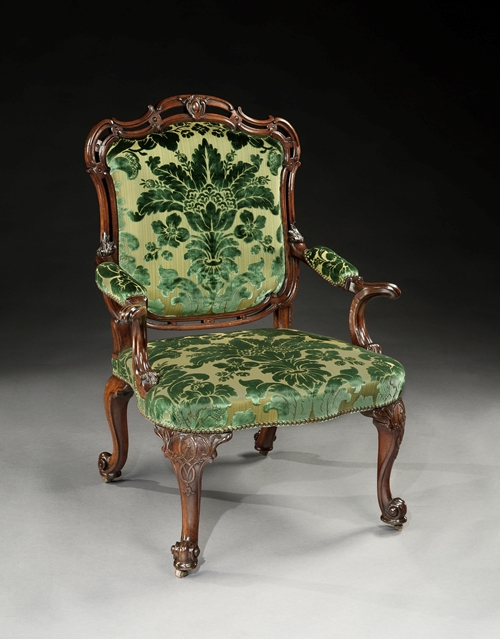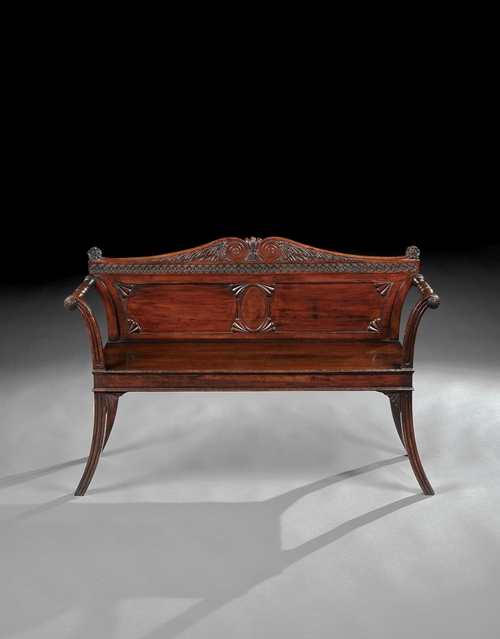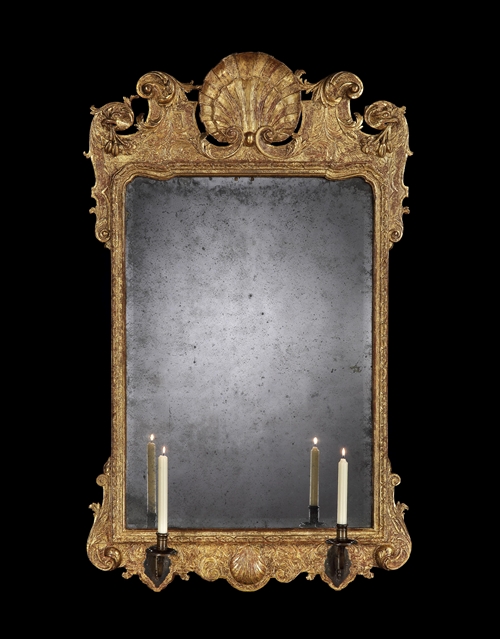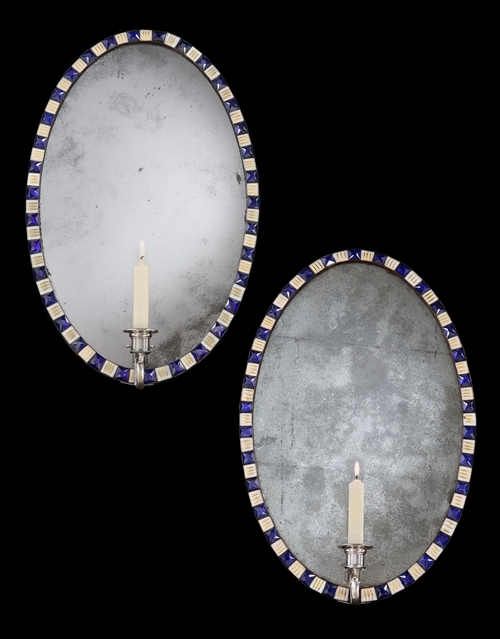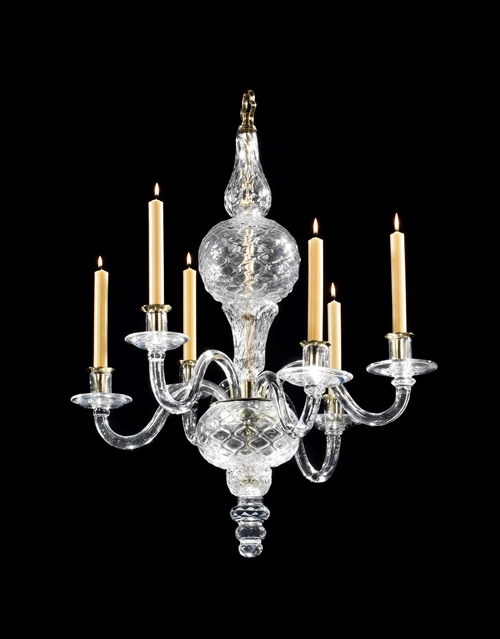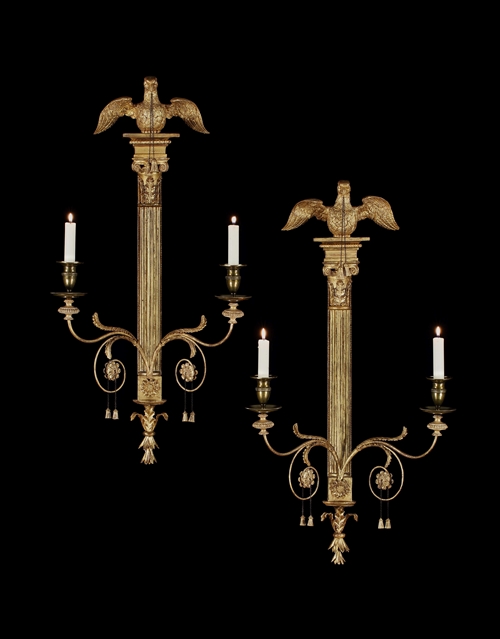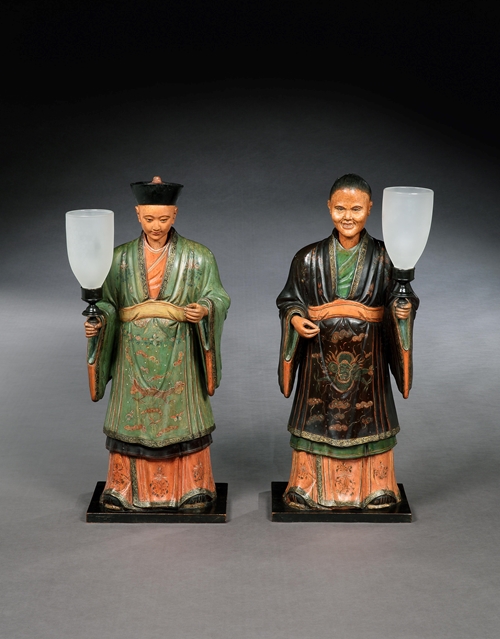Note: The table retains virtually all the original gilding.
The quality of the gesso carving on this table is second to none, and it must have been carried out by a highly sophisticated craftsman, probably working in London.
The design of this piece is based on that for a table made as part of the legendary suite of silver furniture commissioned by Louis XIV for the Hall of Mirrors at the Palace of Versailles in the 1680s. Some 200 pieces in solid silver were made to Charles Le Brun's designs, but they were all melted down on the King's orders soon afterwards, in 1689, to defray the costs of his military campaigns.
The architect and designer Daniel Marot trained under Jean Le Pautre, Le Brun's draughtsman, and must have been familiar with the design for the table. He adapted the design by adding his typical arabesque decoration to the top, along with bold gadrooning and a central mask motif, but he retained the striking winged caryatid corner supports that make this design so recognisable.
Marot was a French-born huguenot who fled France to escape religious persecution. He settled in Holland and found employment there under the Protestant William of Orange, later moving to London in 1694 when William became King of England, alongside his wife Queen Mary.
During the next four years, before returning to Holland in 1698, Marot designed furnishings for the royal residences of Hampton Court, Surrey, and Kensington Palace, London. Although little of his work has survived, Boughton House in Northamptonshire features some elements based on his designs in the form of arabesque wall decoration. Marot's desgins were published in a series of books in his own lifetime and were adapted by English cabinet-makers of the time.
The transition from the original design to the finished article makes this table quintessentially English. Dutch, Flemish or French carving of the Baroque period is far more bold and curvaceous in comparison, whereas the leaf carving on the frieze, the scrolls and the caryatid legs of this table are restrained in a way that only English carving of the early 18th century can be. The central carved head of an American Indian with a head dress merging into leaf work features the distinctive pointed lips that appear to be unique to English carving in the portrayal of North American native peoples.
Very few English gesso tables from this period have survived, and examples of comparable quality are extremely rare.
A carved walnut table with similar caryatid supports is in the collection at Ham House, Richmond, Surrey.
Literature: Daniel Marot, Oeuvres du Sr D Marot Architecte de Guillaume III Roy de la Grande Bretagne Contenante Plussiers pensees utilles aux Architectes, Peintres, Sculpteurs, Orfeures, Jardeinieres & autres, 1703.
-
Provenance
Private collection, London, England.
Looking for something similar? YOU MAY ALSO LIKE
YOU HAVE RECENTLY VIEWED ITEMS
Make an enquiry
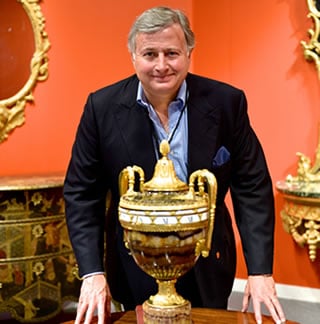
- CAN WE HELP YOU?
- +44 (0)20 7493 2341
- [email protected]

